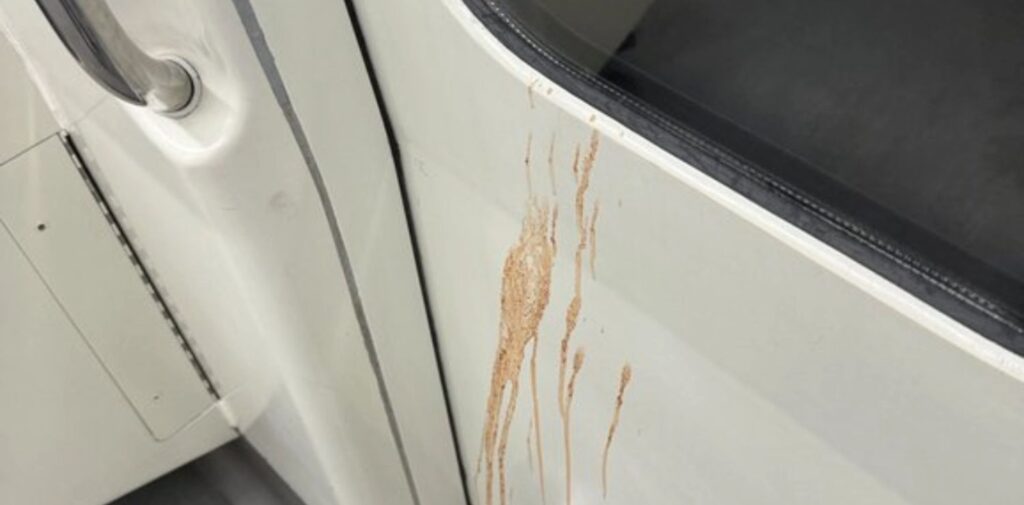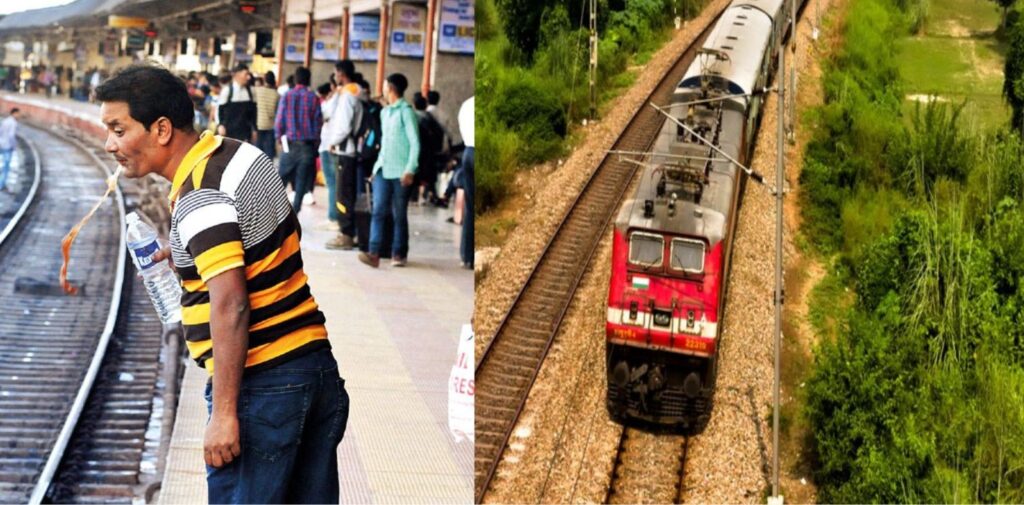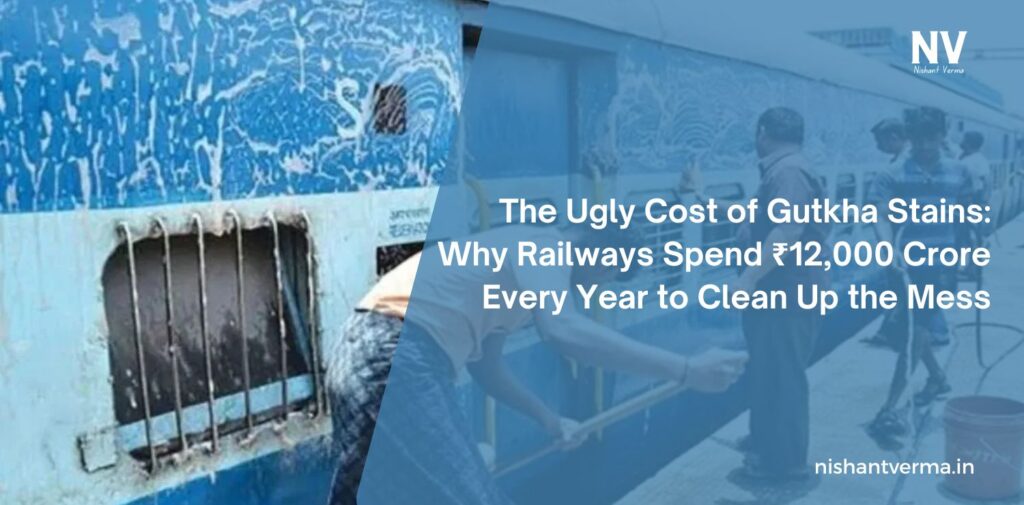The Indian Railways is the backbone of the nation’s transportation network, carrying millions of passengers across the country daily. While it’s a source of pride for many, there’s an ugly stain that keeps marring the image of this great institution—literally. Gutkha stains, those unsightly red marks found on walls, platforms, and train compartments, have become a huge problem. Shockingly, the Indian Railways Cost of Gutkha Stains ₹12,000 crore every year just to clean these stains.
This is a staggering amount for something that can easily be avoided. The story of these stains is more than just a cleanliness issue; it reflects a larger societal problem of disrespecting public property. It also shows how individuals’ irresponsible behavior can lead to enormous financial losses for the country.
Gutkha: The Problem Behind the Stains
Gutkha, a form of chewing tobacco mixed with areca nut and various flavoring agents, is popular in many parts of India. Unfortunately, gutkha chewing is not only a health hazard but also a significant cause of public nuisance. Most users spit the residue, which is a red liquid, anywhere they find convenient—be it on the ground, on walls, or, in the case of train passengers, in corners of railway compartments and platforms. Over time, these stains become harder to clean and leave a permanent mark on the structures, damaging not only the aesthetic but also the hygiene of public spaces.
While the issue of gutkha stains might seem minor to some, its impact is massive, both financially and socially.

The Financial Burden: ₹12 000 Crore Down the Drain
Spending ₹12,000 crore every year to clean gutkha stains is a colossal waste of resources that could be used for much better purposes. To put this into perspective, this amount is almost equivalent to the cost of building new railway lines, improving infrastructure, or introducing new safety measures. It’s enough money to transform the Railways in a more meaningful way, but instead, it’s being used to fix a problem that shouldn’t exist in the first place.
Imagine how much better the railways could be if this money was directed towards improving passenger services or reducing ticket prices. Instead, a significant portion of the budget is being eaten away by the negligence of a few. This isn’t just a financial loss for the Indian Railways; it’s a loss for every citizen who relies on the railways.
The Ugly Side of Disrespecting Public Property
At the heart of the gutkha stain problem is a deep-rooted culture of disrespecting public property. Many people fail to realize that public property, like trains and platforms, belongs to all of us. It’s a shared resource that needs to be maintained for the benefit of everyone. However, the habit of spitting gutkha on walls or tracks shows a lack of civic sense and social responsibility.
Public spaces are an extension of our homes, and just as we would never think of spitting on our walls or floors at home, the same respect should be shown in public places. The railways are not just a means of transportation; they are part of India’s heritage and pride. Each time a wall is stained with gutkha, it’s not just an inconvenience, but a sign of negligence towards our country.

Fines and Penalties: A Much-Needed Step
To combat this issue, the Indian Railways has introduced fines and penalties for spitting gutkha and littering on railway property. However, enforcement remains a challenge. In many cases, these fines are either not imposed strictly, or passengers are unaware of the rules. Even when fines are imposed, they are often too low to deter repeat offenders.
The introduction of heavier fines and strict enforcement is necessary to address this problem at its core. In addition to penalties, public awareness campaigns need to be intensified. People should be made aware of the real cost of their careless actions and how it affects everyone. Perhaps, if individuals realized that their actions are costing the railways thousands of crores every year, they might think twice before spitting.
Social and Environmental Impact
The problem of gutkha stains doesn’t stop at aesthetics or finances. It also has a significant social and environmental impact. Gutkha is known to be highly addictive and poses severe health risks, including cancer. The careless spitting of gutkha adds to the spread of diseases as well, making public spaces unhygienic and unsafe, especially during the monsoon season when spit mixed with rainwater can spread infections.
Moreover, the cleaning process itself is not environmentally friendly. Cleaning chemicals and other resources are used in large quantities to remove these stains, contributing to environmental pollution. The water and chemicals used to scrub these walls end up in the drainage system, adding to water pollution. In essence, gutkha stains are harming not only our public spaces but also our health and the environment.
A Collective Responsibility
The problem of gutkha stains and the ₹12,000 crore loss it causes every year is not just the Railways’ problem—it’s a problem for all of us. As citizens, we have a responsibility to maintain the cleanliness of our public spaces. This issue can only be solved if we collectively take ownership of our surroundings.
Public awareness campaigns that appeal to the pride of the nation, urging people to keep public spaces clean, are crucial. Educational programs in schools and communities can also help in instilling a sense of responsibility in young minds, ensuring that the next generation is more respectful of public property.

Possible Solutions: What Can Be Done?
- Increased Fines and Strict Enforcement: One of the most effective ways to tackle this problem is by imposing stricter fines and ensuring that offenders are held accountable. Instead of small fines, hefty penalties should be charged to make people think twice before spitting gutkha on railway property.
- Awareness Campaigns: People need to be educated about the massive financial and environmental costs of their actions. Awareness campaigns should emphasize how this problem is draining public resources and harming the nation’s infrastructure.
- More Cleaning Infrastructure: While prevention is the best solution, investing in better cleaning technology can help reduce the burden of cleaning. The use of modern cleaning tools and eco-friendly chemicals can make the process faster and more efficient.
- Ban on Gutkha in Public Places: Several states in India have already banned gutkha due to its health risks. Extending this ban to public places, especially in areas like railway stations, could significantly reduce the problem.
Conclusion: Cost of Gutkha Stains
The ₹12,000 crore that the Railways spends every year to clean gutkha stains is a colossal waste, one that could be avoided if everyone took responsibility for their actions. It’s not just about keeping our trains and platforms clean; it’s about showing respect for public property, valuing our nation’s resources, and creating a better future for all.
It’s high time we, as a society, wake up to the ugly cost of these stains and work together to find solutions. After all, a cleaner railway system means a better India for everyone.




